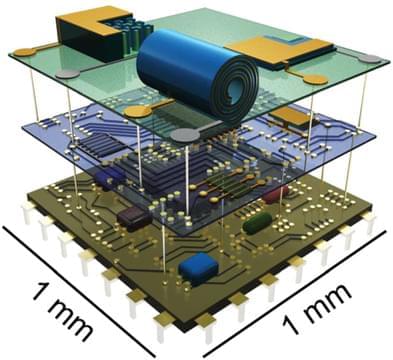And it’s the size of a grain of dust. Energy storage might have been revolutionized thanks to a common dessert dish.
Advances in microelectronics have enabled the use of miniaturized computers for autonomous intelligence at the size of a dust particle less than one square millimeter across and a few hundred micrometers thick, creating an environment for ubiquitous computing. However, the size mismatch between microbatteries and microelectronics has emerged as a fundamental barrier against the take-off of tiny intelligent systems requiring power anytime anywhere. Mainstream microbattery structures include stacked thin films on the chip or electrode pillars and on-chip interdigitated microelectrodes. Nevertheless, available technologies cannot shrink the footprint area of batteries while maintaining adequate energy storage. Alternatively, the on-chip self-assembly process known as micro-origami is capable of winding stacked thin films into Swiss-roll structures to reduce the footprint area, which exactly mimics the manufacture of the most successful full-sized batteries—cylinder batteries. In addition to discussing in detail the technical difficulties of reducing the size of on-chip microbatteries with various structures and potential solutions, this Perspective highlights the following two basic requirements for eventual integration in microcomputers: minimum energy density of 100 microwatt-hour per square centimeter and monolithic integration with other functional electric circuits on the chip.
